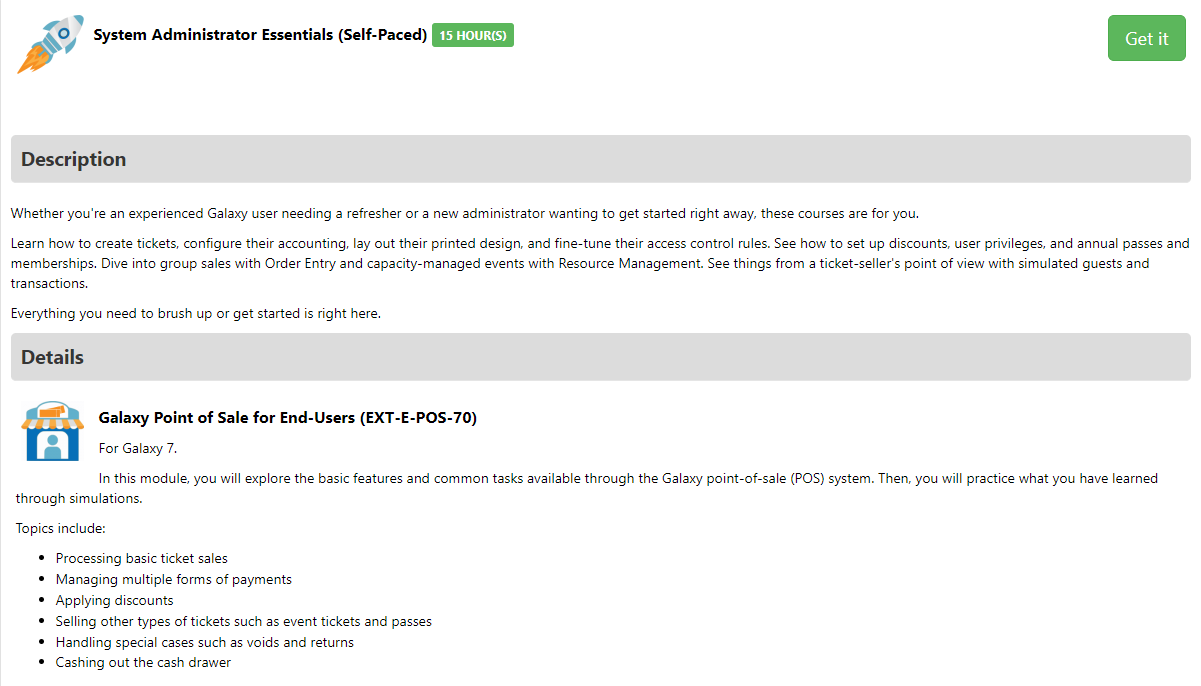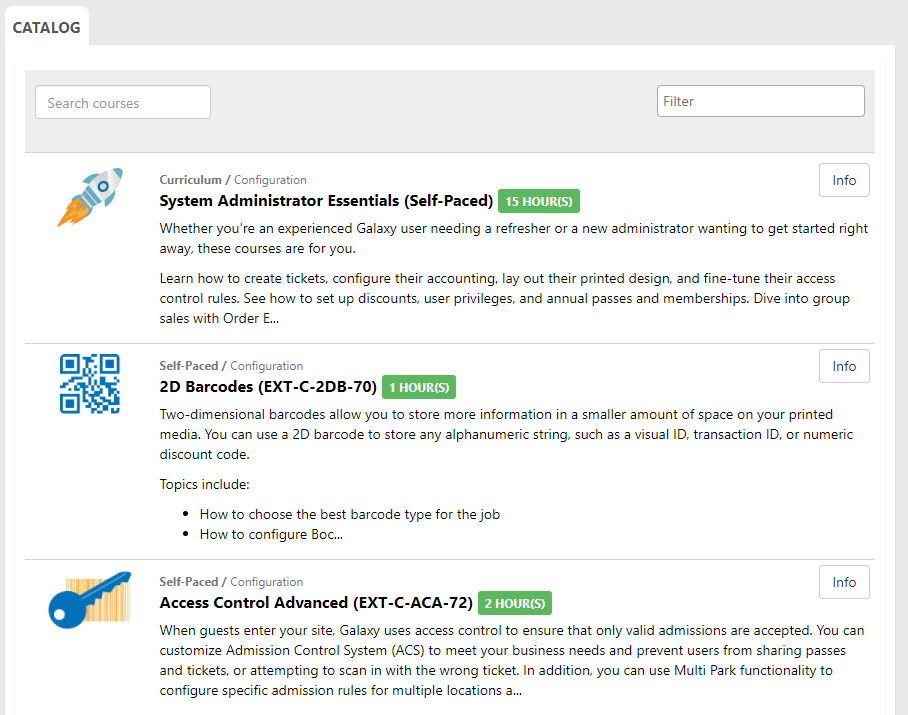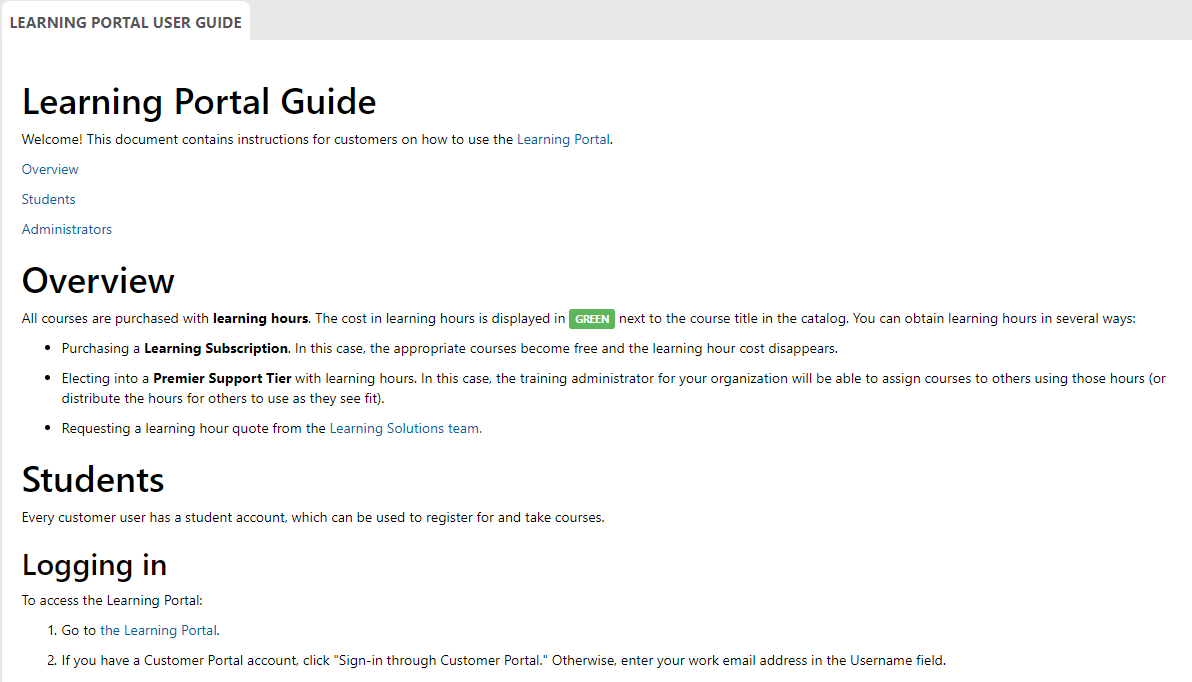PORTFOLIO SAMPLE
LMS Launch



Challenge
Gateway Ticketing Systems, a small company that develops ecommerce and access-control software, needed a platform to deploy and monetize its new e-learning catalog. The platform also needed to support registrations for the company’s existing instructor-led training schedule, as well as restricted permissions for the learning administrators at each customer’s site. Previously, the company had used event-scheduling software in place of a dedicated learning management system (LMS).
Solution
Starting with the company’s primary needs, I interviewed the members of the company’s Learning Solutions team and developed a checklist of about 50 requirements. I split these into must-haves and nice-to-haves, researched LMS vendors using Google and Capterra, and sent our requirements list to promising candidates. After narrowing the pool to three, I invited members of the Learning Solutions and Information Technology teams to demos with the vendors. Following the demos, I experimented in sandbox environments to ensure there were no requirements gaps. We ended up selecting eFront Pro as the vendor, with usability and customization being the deciding factors.
With our vendor selected, I configured the LMS from scratch. I used HTML, CSS, and Javascript to theme the platform and tweak its behavior to match company standards. The LMS did not have the necessary reports out-of-the-box, so I wrote custom ones using SQL and PHP. Once the configuration was finished, I created user accounts for each role, wrote user-acceptance testing checklists, distributed the checklists to members of other departments, and worked with the vendor’s development team to implement code fixes.
Rolling out the LMS to internal departments and customers required a combination of mass communication and targeted campaigning, generally following the ADKAR change management model (Awareness, Desire, Knowledge, Ability, and Reinforcement). To create Awareness and Desire, the COO of the company had previously announced the new LMS at the company’s user-group meetings and explained how it would solve the problem of having to wait for scheduled instructor-led classes. To provide Knowledge of how to use the LMS, I wrote a brief introductory email campaign and more detailed user guides. To ensure people had the Ability to follow the guides, I met with selected managers and the sales team to walk them through the platform, and I approached specific customers who were likely to find an immediate benefit in the courses available. Finally, I provided Reinforcement for the LMS by acting as both technical support and sales evangelist.
Result
The new LMS and e-learning courses generated a 15% profit margin in their second year, including all LMS fees and course development labor. Although the company needed to make several small adjustments to its e-learning strategy as it developed its initial course offering, it did not identify any needs beyond the abilities of the current LMS until three years later.
Reflection
If I were to lead this company’s LMS search again, I would encourage the company to be more flexible with its existing business practices. Some of them—such as its methods for collecting payment, registering students for scheduled classes, and separating permissions—turned out to be far removed from mainstream LMS functionality at the company’s price point. Adjusting those practices would have allowed us to broaden our LMS search, find other useful features, and save time on customization.